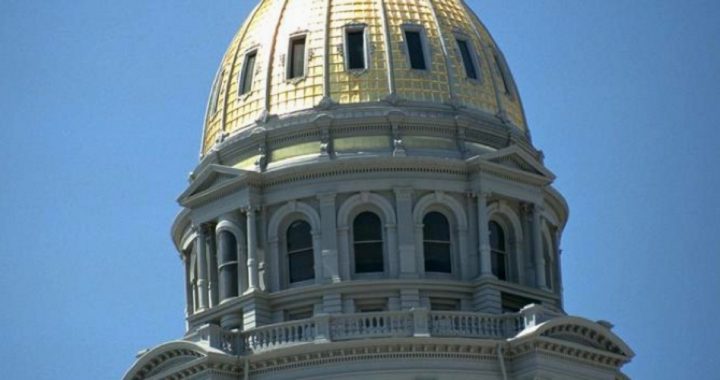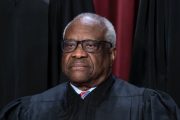
The future of the effort of several rural counties in Colorado to secede and form a new state is unclear now that the counties participating have split on the issue.
Election results from November 5 reveal that a majority of voters in five of the counties where the question was on the ballot approved the move, while citizens in six counties decided to stay in the Centennial State.
Washington, Phillips, Yuma, Kit Carson, and Cheyenne Counties voted leave the rest of the state and form the new state of North Colorado. Although they were included in the proposed “51st State,” voters in Weld, Logan, Sedgewick, Elbert, Lincoln, and Carson Counties decided to stay put.
The ballot question put to voters in the relevant counties asked: “Shall the Board of County Commissioners of ______ County, in concert with the county commissioners of other Colorado counties, pursue becoming the 51st state of the United States of America?”
As is evident from the phrasing of the question, the five counties where secession was approved will not be able to immediately break political ties with Colorado. The positive vote simply authorizes county officials from those counties to “pursue” the route that would lead to secession.
Pursuit of that path would be quite a process. Besides majority approval of a county resolution calling for secession, Article IV, Section 3 of the U.S. Constitution establishes the following method for carving a new state out of an existing one:
New states may be admitted by the Congress into this union; but no new states shall be formed or erected within the jurisdiction of any other state; nor any state be formed by the junction of two or more states, or parts of states, without the consent of the legislatures of the states concerned as well as of the Congress.
If these counties somehow get over all these obstacles, North Colorado would become the first state since West Virginia did it in 1863.
What are the odds that voters in these counties can make history? Not surprisingly, a college professor quoted in a Christian Science Monitor not only doubts it can happen, but he makes a sideways reference to the role of race in the movement, as well. As reported by the Monitor:
“These efforts are always percolating, but not realistic. They are more common today because we see more like-minded people feeling that they can’t control their political environment,” says Prof. John McGlennon, chairman of government at the College of William & Mary in Williamsburg, Va. “Nowadays, it is rural white voters who are at odds with their increasingly urban states. But the obstacles to secession are nearly insurmountable.”
And, later, he takes another not-so-subtle shot at the identity of those advocating for secession:
It is hard to imagine both the state legislatures and Congress approving such divisions, given the implications for state and national politics. Would suburban Republicans in Colorado want to cleave off a large chunk of the vote [that] a GOP candidate for governor would need to win? Would state or national Democrats be anxious to create a new state almost certain to send an all-Republican delegation to Congress?
Supporters see things differently.
Weld County Commissioner Sean Conway has been one of the proposal’s chief proponents since the beginning, and he thinks secession is an idea whose time has come.
“It hasn’t been tried in a while, but we also didn’t have a Supreme Court decide the presidential election for 100 years,” Conway told the Tribune, a paper serving Greeley and Weld Counties.
Although six counties failed to approve the ballot measure calling for secession, including his own, Conway promises to “continue to look at the problems of the urban and rural divide in this state.”
An online Huffington Post article reporting on the election results rehearses the origin of the North Colorado secession movement:
The secession plan was driven by a number of new laws recently passed by the Democratic-controlled legislature, including gun control, the curbing of perceived cruel treatment of livestock, expanded regulation of oil and gas production, an increase in renewable energy standards in rural areas and civil unions.
“The heart of the 51st State Initiative is simple,” the backers of the measure explain on their website. “We just want to be left alone to live our lives without heavy-handed restrictions from the state capitol. Will statehood be easy? No. However, pioneers are who have made this state great. Those early miners that came for the gold rush were pioneers. The early settlers that began farming the land and built the infrastructure to enable Colorado to be an agricultural powerhouse — they were also pioneers.”
The story in the Tribune provided a sample of several states where there were unsuccessful secession attempts:
» Arizona: In February 2011, Tucson politicians and activists tried to create the state of Baja Arizona.
» California: One of the most common places for threats of secession. Most recently, conservative counties proposed a Southern California.
» Colorado: In the mid-1930s, Huerfano County wanted to secede from the state.
» Florida: Most recently in 2011, the South Florida metropolitan area attempted to split Florida into North Florida and South Florida.
» Illinois: In November 2011, state representatives revived a proposal to split the state into Chicago and Illinois.
» Kansas: In 1992, a group of southwestern Kansans wanted a few counties to secede from Kansas and become West Kansas.
» Maine: In 2005, politicians of Aroostook County asked the state legislature to make the county a new state.
» Maryland: In September 2009, a Frederick County commissioner proposed that the county secede from Maryland.
» Massachusetts: In 1977, a Statehood Support Committee of Martha’s Vineyard promoted the secession of Nantucket from Massachusetts.
» Minnesota: In 1997, the Northwest Angle region suggested seceding from the United States and joining Canada.
» Nebraska: Panhandle residents threatened to secede from Nebraska and join Wyoming.
» New Mexico: From 1970-90, local activists proposed that the southern half become West Texas and the eastern half become North Texas.
» New York: In 2009, proposals were floated for a New York and West New York.
» Ohio: In 2005, a county executive of Summit County wanted Akron to secede from Ohio and become Northeast Ohio.
» Oregon: In 2008, there was a proposal to secede eastern Oregon and eastern Washington and join the two together.
» Utah: In 2008, the southern part of Utah wanted to form its own state.
» Vermont: In 2004 and 2005, the town of Killington voted to secede from the state and become part of New Hampshire.
The federal government has been driving us down this road for nearly 200 years. It was the “strong centralizing tendencies” of the John Quincy Adams administration in 1824 that solidified the states’ rights sentiment in the South. The federal government today has those same tendencies toward aggregation of all power. The contemporary gluttony of power by successive presidential administrations and congresses pushed the states onto their current track toward nullifying several federal acts and, possibly, seceding from the union.
Now, as in the 1820s, the union is about to splinter. Today it is centralism, not sectionalism, that threatens the union. The central government — on its own and through its all-but-official media mouthpieces — elevates itself above all and demands dominion over the lives of its citizens and over every last acre of the formerly sovereign territory of this nation. Any reluctance to toe the party line is immediately punished through legislation and regulation that chokes the economic life of states.
In the early 19th century, as well as today, secession and nullification were prompted by a Congress that created a system wherein it had to legislate to win votes. States need not secede to rid themselves of this repugnant cronyism, however. States simply must nullify all acts of the federal government not authorized by the powers allotted to it in the Constitution.
Although secession is not the “rightful remedy” proposed by Thomas Jefferson, it is a legitimate weapon in the war against the growth of an all-powerful central government with states serving as nothing more than subordinate administrative outposts. And, in the words of Jefferson himself:
That whenever any Form of Government becomes destructive of these ends, it is the Right of the People to alter or to abolish it, and to institute new Government, laying its foundation on such principles and organizing its powers in such form, as to them shall seem most likely to effect their Safety and Happiness.
Joe A. Wolverton, II, J.D. is a correspondent for The New American and travels frequently nationwide speaking on topics of nullification, the NDAA, and the surveillance state. He is the host of The New American Review radio show that is simulcast on YouTube every Monday. Follow him on Twitter @TNAJoeWolverton and he can be reached at [email protected]



